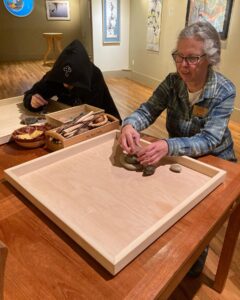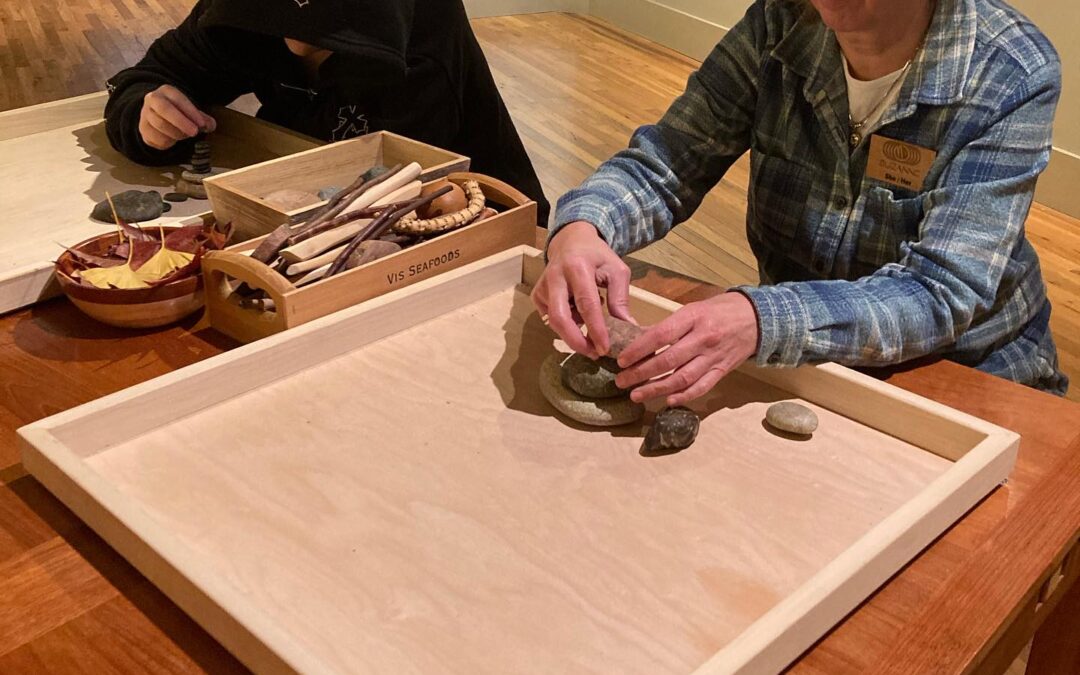“Loose Parts” is an educational philosophy that encourages decision-making, creativity, and freedom within play. By providing a variety of high-quality objects the “player” is encouraged to experiment respectfully without restraint or fear of mistakes. During loose parts play, guests can assign their own purpose or meaning to the objects.
Our public engagement director, Suzanne Goodell, introduced this philosophy in Mindport in 2021 after being inspired by the techniques used in the Working in the Reggio Way by Julianne Wurm and Loose Parts by Lisa Daly and Miriam Beloglovsky. Goodell loves “Loose Parts” because it’s an educational philosophy that can be directed towards all ages and inspire joy and play. The museum’s first iteration of “Loose Parts” was a table with building blocks and magnets without instructions to guide how visitors interacted with them. After so many creative configurations, “Loose Parts” was here to stay. Mindport’s current version of the exhibit features woods, rocks, and leaves that can be stacked, arranged, and played with in endless different ways.
The ideas behind “Loose Parts” merge perfectly with our own Mindport philosophy; experimentation, learning, creativity, and enjoyment. Many of the exhibits here in the museum allow for experimentation and variation in the outcomes, but many have instructions for how to carry out those experiments. “Loose Parts” is unique because there are no instructions and therefore no wrong way to engage with the exhibit. “Loose Parts” is the most fundamental form of learning we wish to foster here at Mindport.

Suzanne and a young visitor engage with the Loose Parts tray together.

